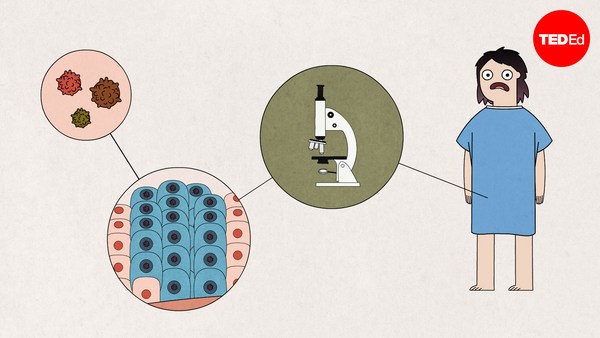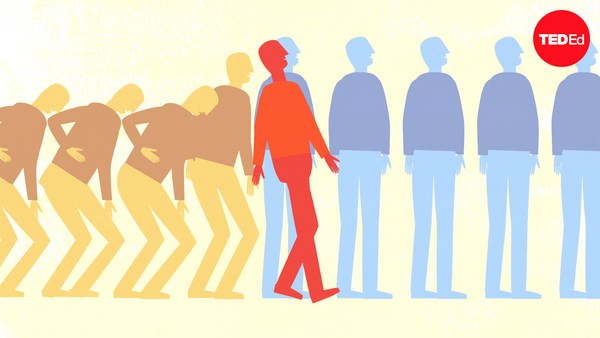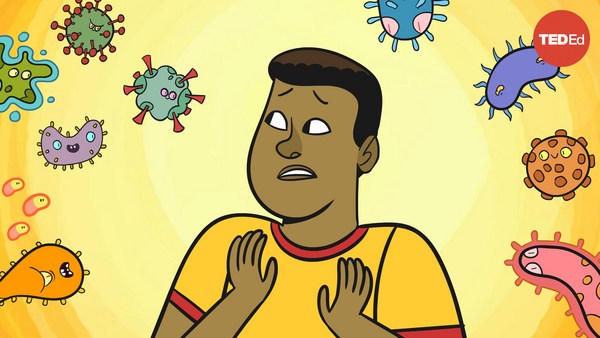Throughout history, people have attributed warts to contact with things like sea foam, boiled egg water, and, of course, toads. We now know that toads are totally innocent in the matter. They're bumpy because mucus- and poison- secreting glands dot their skin. And we've figured out that warts are actually caused by papillomaviruses.
They form a broad virus family that infects various species, including us. There are more than 200 different types of specifically human papillomaviruses, or HPVs. As is the case with all viruses, HPVs can't multiply independently. Instead, HPVs use our skin cells to replicate. They do this by infecting the basal cells that constantly produce new skin cells and line the base of our skin's outermost layer, the epidermis.
Your skin is your largest organ. It functions like a waterproof, active immune barrier that protects your body from the many pathogens perpetually poised to penetrate it. If any HPVs do make it past the skin's outermost surveillance system, it can activate a barrage of defenses. But sometimes, HPVs still make it through. They have a better chance of getting all the way to the skin's basal cell layer when your skin is wet, softened, or injured, even with the tiniest of cuts. You're most likely to develop warts on your hands and feet because they're most likely to encounter foreign surfaces and get superficially injured, especially in shared, wet environments like shower rooms.
Once HPV reaches your skin's basal cell layer, it unleashes its genome, which instructs the basal cells to multiply at higher rates, defer cell death, and replicate the virus. From there, the infected skin cells proliferate, piling up as they move towards the skin's surface, forming that telltale wart. But what exactly the wart looks like depends on a few factors. It's not totally clear why, but different HPV types tend to infect different parts of the body, cause unique-looking warts, and range in seriousness. Common warts are often domed and found on hands, elbows, and knees; plantar warts occur on the soles of feet, where walking may flatten them; filiform warts, around the mouth and eyes; and flat warts, on the legs and face. Warts can also feature little black dots, which are actually tiny blood clots where capillaries in the skin have become obstructed. Regardless of how exactly the wart forms, when the infected skin cells it's made of die, they release thousands of HPVs. This is why one wart can theoretically infect other parts of someone's body— or other people, directly or indirectly. However, the likelihood of this happening depends on what kind of HPV is involved and what part of the body it's best at infecting.
Most HPVs infect different areas of the skin and cause benign warts. However, some HPVs prefer the body's mucosal epithelia, the soft, moist tissues that line our reproductive, digestive, and respiratory tracts. These HPVs are the most common sexually transmitted infections. And while they're also usually benign, they're more likely to be persistent and some types can cause cancers. Doctors might recommend topical or surgical treatment for these infections. And HPV vaccines that are almost 100% effective in preventing infections from the riskiest HPV types became available in 2006.
The body often keeps HPV at bay or resolves infections within a couple of years. But some people are more susceptible, and some HPV types are more persistent. Handling meat and fish puts people in contact with specific HPV types. Children and elderly people are thought to be more vulnerable to HPV infections because their skin tends to be thinner and have less organized immune defenses. And compromised immunity or skin flora— caused by things like smoking, chemotherapy, HIV, and genetic variation— can make it harder for the body to suppress HPV infections.
And although most warts are harmless and go away without intervention, they're still contagious, and dermatologists have methods to help the body clear them. Some treatments work by stimulating the immune system directly, while others— like salicylic acid and cryotherapy— irritate the infected area, indirectly activating an immune response. Thankfully, there are lots of options available in addressing our wart worries— and simply no need to slander toads.


